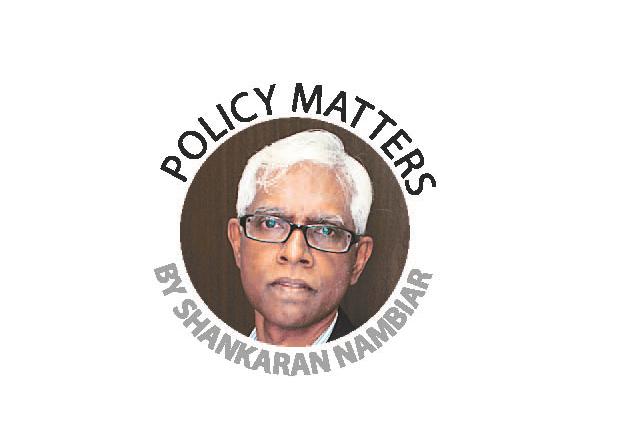THERE is legitimate concern that the Malaysian economy will slip into slower growth mode. The global economic outlook is not terribly promising.
The IMF has cut its growth forecast for 2019 from its earlier estimate of 3.9% to 3.7%.
Similarly, the ADB has put the region’s growth rate expectation at 5.8%, down from an earlier forecast of 5.9%.
A strong theme that contributes to these downward revisions is the US-China trade war and how it could upset markets.
If the US-China trade theme was a factor for low global growth during the IMF, World Bank annual meetings in Bali in October last year, it is probably more pronounced now with tensions extending to China’s posturing over Taiwan.
Recently, China had announced that its military would have to be prepared for war.
There are two reasons why the US-China tension matters to Malaysia.
First, because it affects global markets and the resulting global demand for Malaysian exports; but more directly because China is Malaysia’s most important trade partner.
Malaysia’s export profile will also be impacted by the state of the global electronics industry in 2019.
At least in the near term the global electronics industry is expected to grow at a slower pace, although one cannot rule out a downturn in electronics exports.
Another important export item, palm oil does not seem to have a bright outlook looking forward.
India has cut its import tax on palm oil – and that is good news. But other factors tend to moderate that phenomenon.
China has high inventories and is likely to go soft on its imports from Malaysia.
The production of palm oil has been good, both in Malaysia and Indonesia, and, barring unexpected changes in weather, would continue to be so.
The abundant supply of palm oil will add to lower the price of palm oil in 2019.
Some forecasters have put it at RM2,300 per tonne, although more optimistic analysts expect something like RM2,500. All of this as compared with a high of RM2,700 in 2017.
The price of oil is another issue of concern. Oil analysts are inclined to think that they could take a tumble, with Goldman Sachs citing US$62 (RM251.72) per barrel on grounds of oversupply.
This has repercussions for export revenue, but it also matters for fiscal soundness.
It should be remembered that Budget 2019 was based on the assumption that oil prices would average US$70 per barrel.
As a consequence of the above factors one could expect to see a slowdown in exports, with the current account surplus narrowing in 2019.
A prudent government that is bent on correcting the excesses of the previous regime will want to trim expenditure.
Public expenditure will therefore be slower and capital spending in the public sector will also go down. What, then, will be driving growth?
Largely, one can expect it to be domestic driven. Domestic consum-ption and private investment may be the more significant contributors to GDP.
Employment has been doing well; that will be a saving grace since it will continue to fuel household spending.
The exchange rate could fall. If it does, that may be a blessing in disguise because a weak ringgit could make Malaysian exports the impetus they need to make them more attractive.
In a weak external environment, a softer ringgit will turn out to be a positive.
All factors put together, 2019 will certainly witness lower growth figures.
The Ministry of Finance expects the Malaysian economy to grow at 4.9%. That is an optimistic figure; growth could well fall to 4.5%.
Nomura Research is less optimistic; the research house has been reported to have set the number at 4%. That may be.
The numbers that are expected to come out for 2019 are not comforting, but neither is the external environment.
If there is any good news it is that we are heading for a slowdown and not for negative growth.
The months ahead will need to see more forward-looking guidance on the government’s policies.
On the fiscal side, the government has maintained its commitment to a prudent fiscal policy. That is surely commendable.
On the monetary side, the central bank has maintained the benchmark interest rate at 3.25%. Certainly, it is a safe stand to have taken, although not one that goes out of its way to placate sentiments.
Accepting that the country is heavily indebted and there has been gross mismanagement of the economy in the past, it is urgently necessary to chart the direction for the future.
The road map for the months ahead needs more clarity.
Shankaran Nambiar is a senior research fellow at the Malaysian Institute of Economic Research. He is author of a forthcoming book, “Malaysia: An economy at the edge of transformation.” Comments: letters@thesundaily.com














